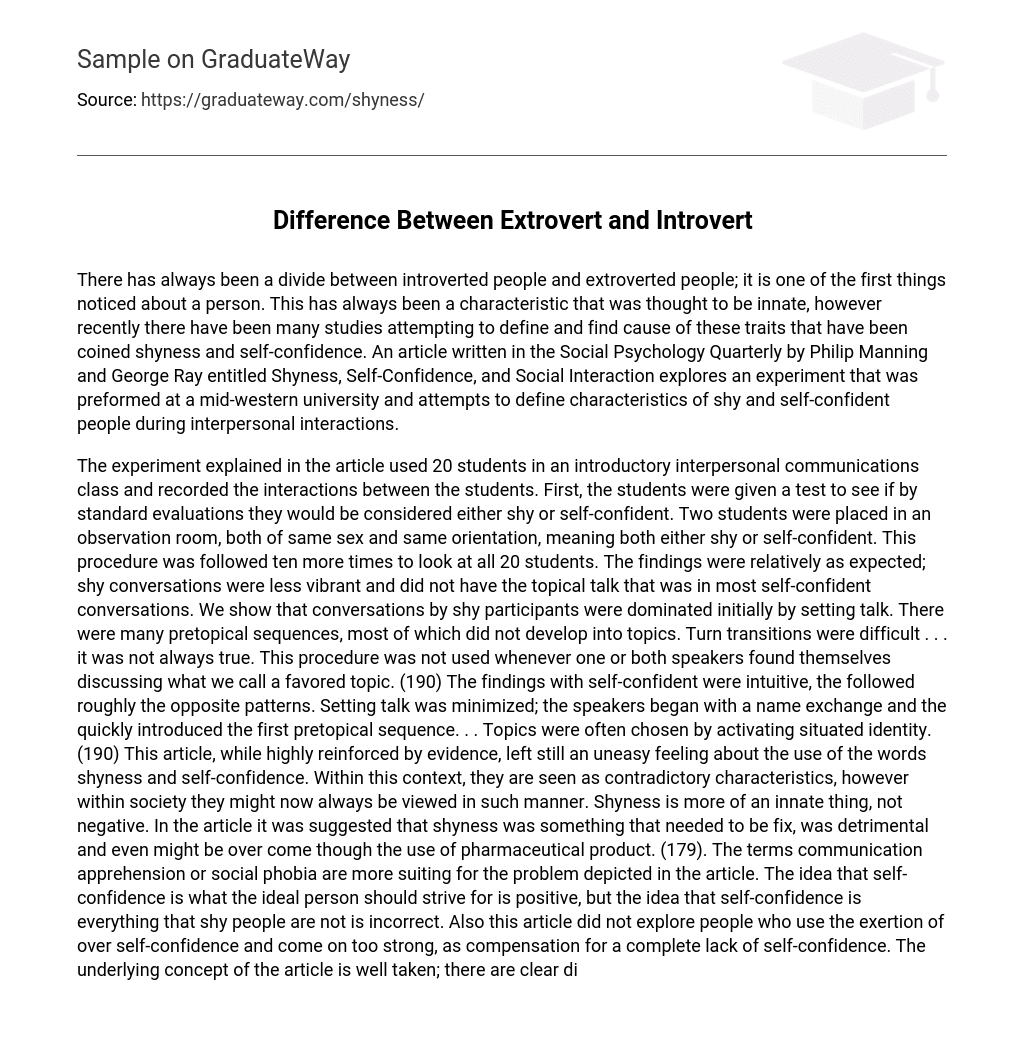In the Social Psychology Quarterly, Philip Manning and George Ray explore the article “Shyness, Self-Confidence, and Social Interaction” where recent studies aim to define and pinpoint the origins of shyness and self-confidence. These introverted and extroverted qualities have always been acknowledged as innate features that differentiate people. The authors delve into an experiment carried out at a mid-western university to gain a deeper comprehension of the behavior exhibited by individuals with shyness or self-confidence in interpersonal interactions.
The article examines a study conducted in an introductory interpersonal communications class involving 20 students. The interactions among the students were recorded and analyzed. Initially, a test was administered to categorize the students as either shy or self-confident based on standard evaluations. For each round of the experiment, two students of the same sex and orientation were placed in an observation room, resulting in ten rounds to include all 20 students.
The outcomes of the experiment generally aligned with expectations. Shy conversations lacked vibrancy and topical talk compared to self-confident conversations. Shy participants mainly engaged in setting talk and had multiple pretopical sequences that did not progress into topics. Transitioning between turns was also challenging for shy participants, although not always. However, this pattern was disrupted when speakers discussed favored topics.
On the other hand, self-confident individuals displayed intuitive findings that exhibited contrasting patterns. Setting talk was minimized, and they quickly introduced the first pretopical sequence after exchanging names. Topics were often chosen by activating situated identity.
While providing compelling evidence, this article raises concerns about the usage of shyness and self-confidence as terms within a societal context (190).The article argues against the negative perception of shyness and suggests that it should be viewed as an inherent quality rather than a flaw. It criticizes the notion that shyness can be overcome with pharmaceutical products and proposes using terms like communication apprehension or social phobia to describe the issue instead. The article highlights that shy individuals may still possess aspects of self-confidence, challenging the assumption that they lack it entirely. It also fails to explore how some individuals compensate for their lack of self-confidence by projecting excessive confidence. Despite these limitations, the article acknowledges clear differences between socially confident and socially unconfident people. It recommends teaching those who struggle with social grace on how to improve their skills but lacks evidence linking these learned characteristics to true self-confidence or plain shyness.
Source Used: Manning, Philip.Ray, George.”Shyness, Self-Confidence, and Social Interaction.” Social Psychology Quarterly Volume 56 (Sept., 1993).





